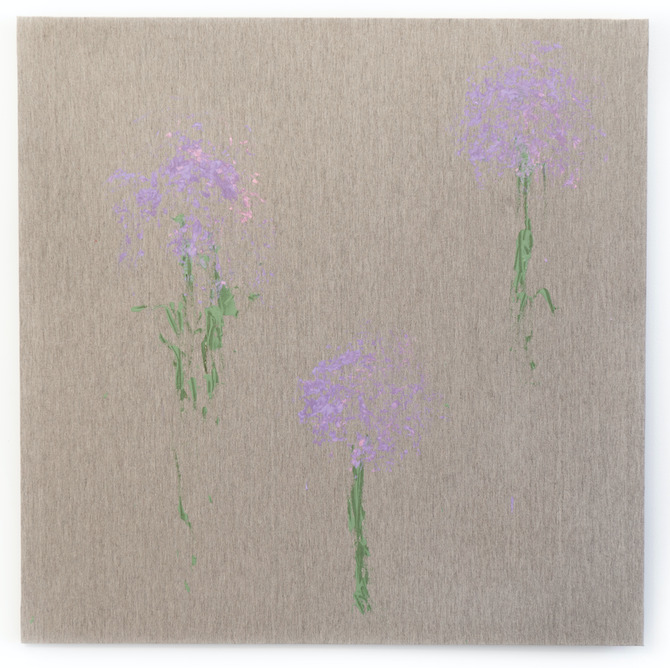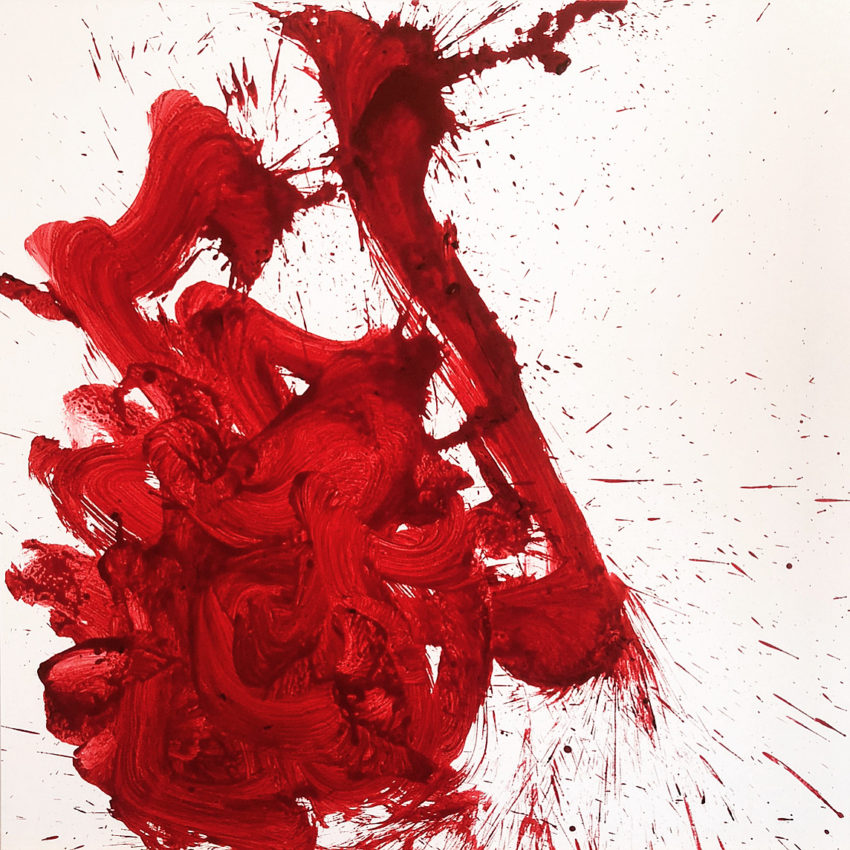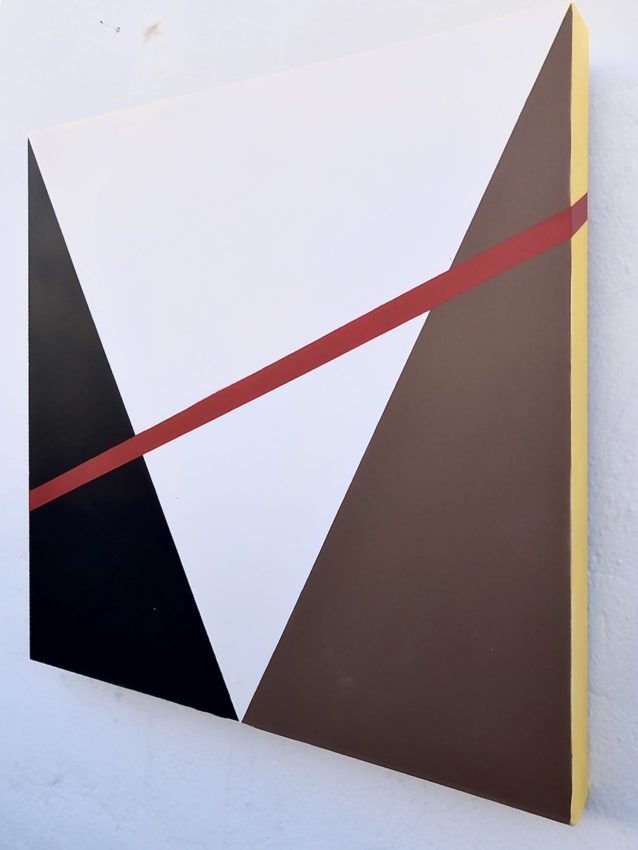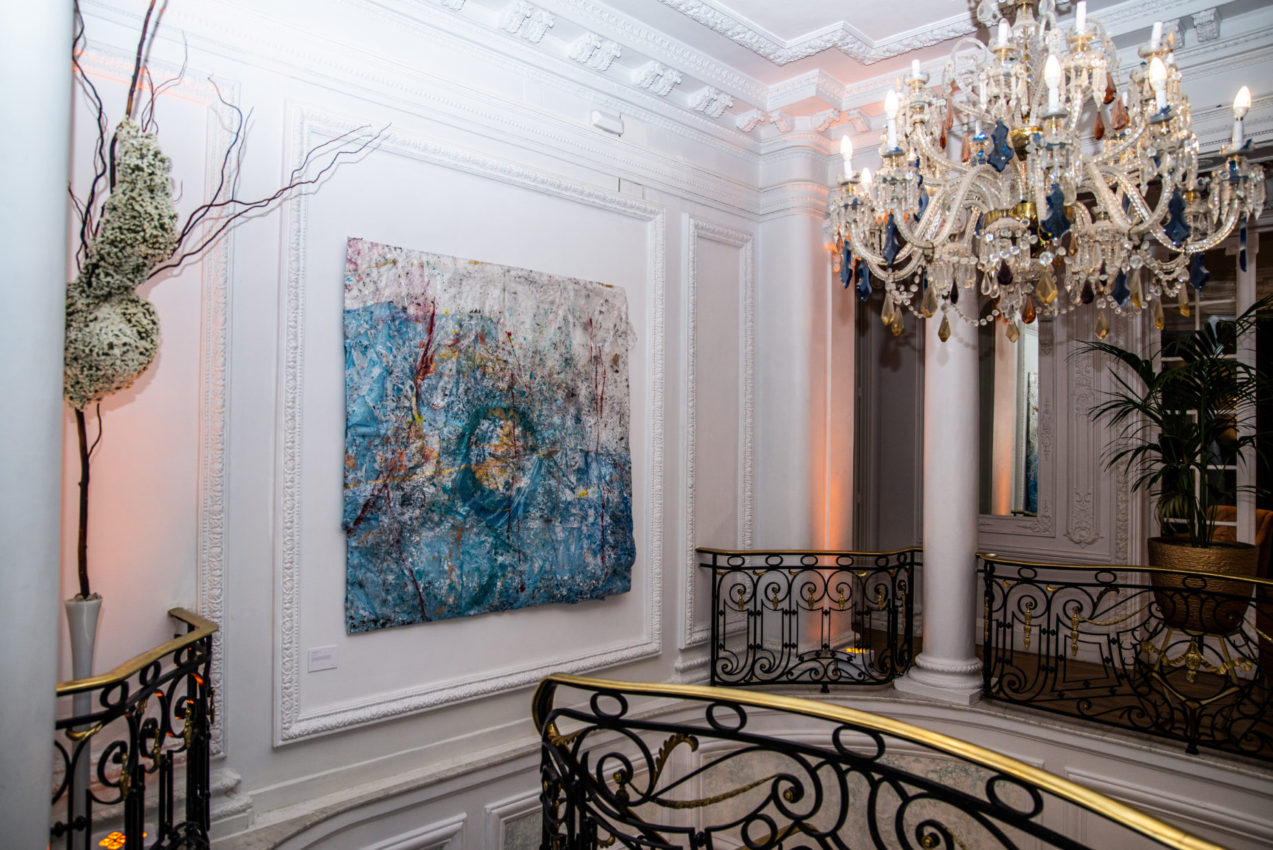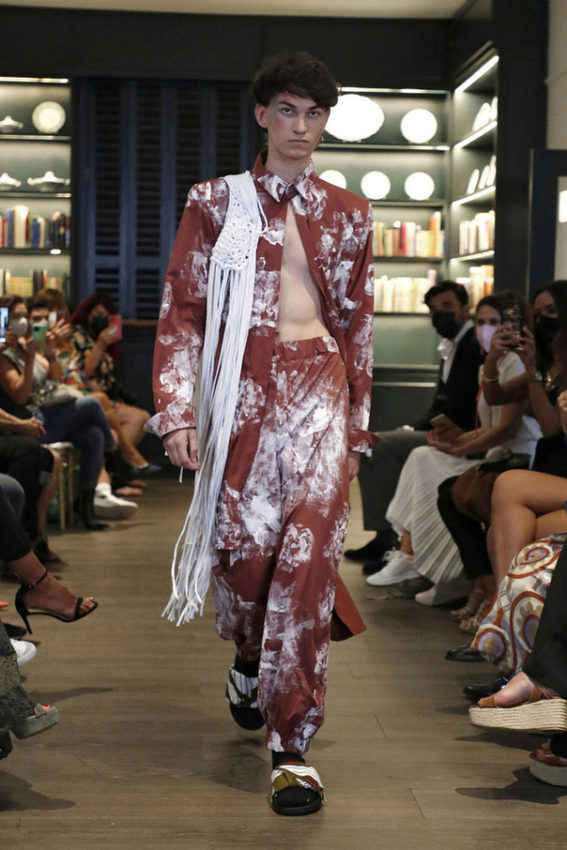Naturism
Naturism
Naturism is a word coined by Masaaki Hasegawa to express the idea of a nature-centered approach to art. It places humans not in the center but considers them simply as an element of nature, and sees art as a phenomenon in the ecosystem. It challenges one of the most critical human values: the idea that humanity is the most valuable existence in the world.
Currently, human-related activities have huge impacts on the earth, but this does not mean that humans are the most precious and valuable existence on the planet or in the universe. Naturism doubts and questions our position, value, and role in this world, and nature-centralism leads us to redefine the relationship between nature, humans, and art.
In the context of art, this means we can modify our perspective of reality. The traditional perspective—humans as the center of the world—is replaced by another perspective to redefine our relationship with the outer world. It aims to disrupt the unconscious hierarchy that humans have created and place them as an element within and of the world.
Documentation of experience as artwork
The role of artwork in Naturism is the documentation of interactions between the artist and nature. The idea comes from the concept of haiku from Japan, which is the shortest format of poetry in the world. The main role of haiku is not to create beautiful poems but to document the experience of the beauty of nature. Having beautiful haiku is a result of experiencing beauty in nature. It is merely a consequence and not the objective. First, there is an experience of feeling the beauty of nature, and second, haiku intends to document it.
A-B-S-T-R-A-C-T
This series visualizes human emotions that are not readily captured by words. It challenges the linguistic perception of one’s self and is an attempt to label the phenomena of the human mind.
Through the creation process, it tries to reduce the amount of “conscious intensity” the human attempt to make something perfect in order to extract unconsciousness, which can handle far more information and enables access to the essence of human experiences.
Seeing humanity as a small part of the universe that partially experiences universal phenomena, the creation process tries to incorporate the essence of nature/universe in an attempt to convert inorganic materials into organic being.
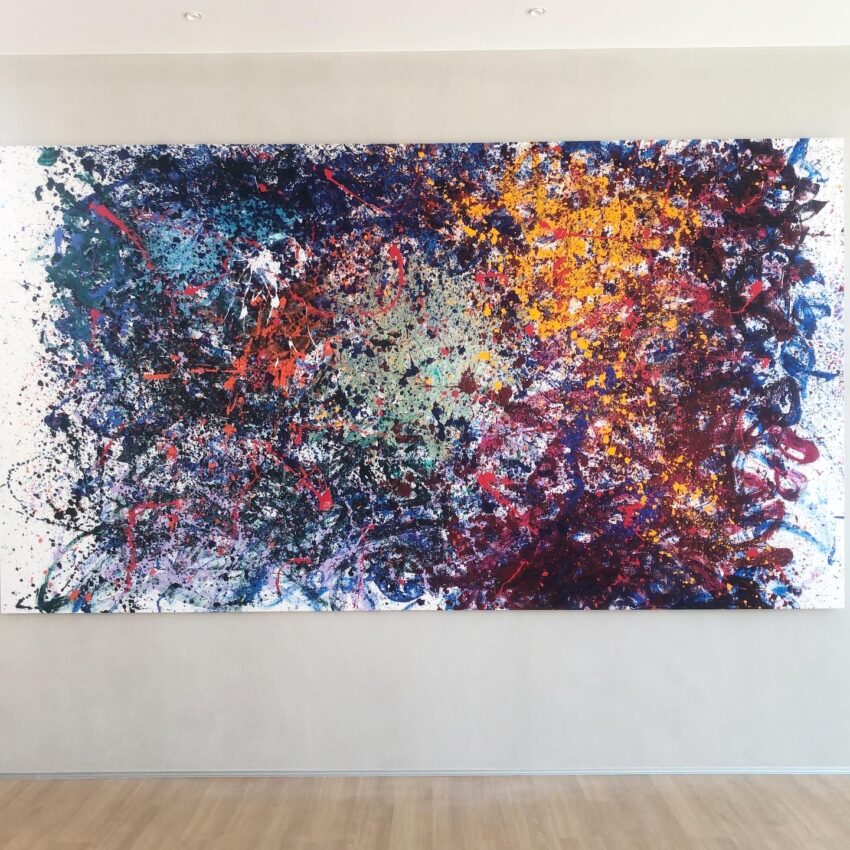
Sound Of Colors-colors dance and make the sound of music. When you are hearing the sound of colors, you don’t need to think of the composition because they tell you where they would like to be. The music exists because we dance. Art exists because we create. Colors exist not in objects but in your mind. This is the end of art theory and the beginning of human being. Art exists for us. It’s not that we exist for art and it’s theories. Everything starts with the perception and so we need to feel first.
Metamorphosis
Masaaki's work attempts to resolve the profound gap between the understanding of feelings and their logical, verbal explanation. The artist's personal life combined with his powerful sensitivity makes him capable of translating his synaesthetic experiences into paintings of an expressionist character. His gesture, at the same time fleeting and forceful, together with his knowledge of various languages, allows him to express in a fluid way his main concerns about life, human relationships, his feelings in contrast with the context he chooses and inhabits.
On this occasion, with his series "metamorphosis" he takes a logical step in which he intends to transfer in a more evident way the capacity given to the spectator to close the meaning of the work, assuming that without the work that corresponds to the spectator to feel through his observation the work would never be complete.
Masaaki proposes again, this time using a Japanese calligraphy brush and only the combination of three colors: black, white, and red, a game of perception that invites the spectator to "fill" the emptiness with his experience of what he has lived. A dance to which the word, once again, arrives late...
Depending
This series explores the combination of color and light to express delicate but profound themes and concepts. It confronts the challenge of expressing philosophical concepts through aesthetic beauty. A light source is typically a catalyst for us to be able to observe objects.
However, in this series, light is part of the subject to be observed, which begins to question the role of each entity’s existence. By turning on the light, artworks appear completely different to our eyes. What is invisible without light becomes visible. Light can change our reality and how we perceive it — it can even change what we feel.
Existence never exists the same in our perception, which is merely an image created by light. Our reality is a projection of our mind.
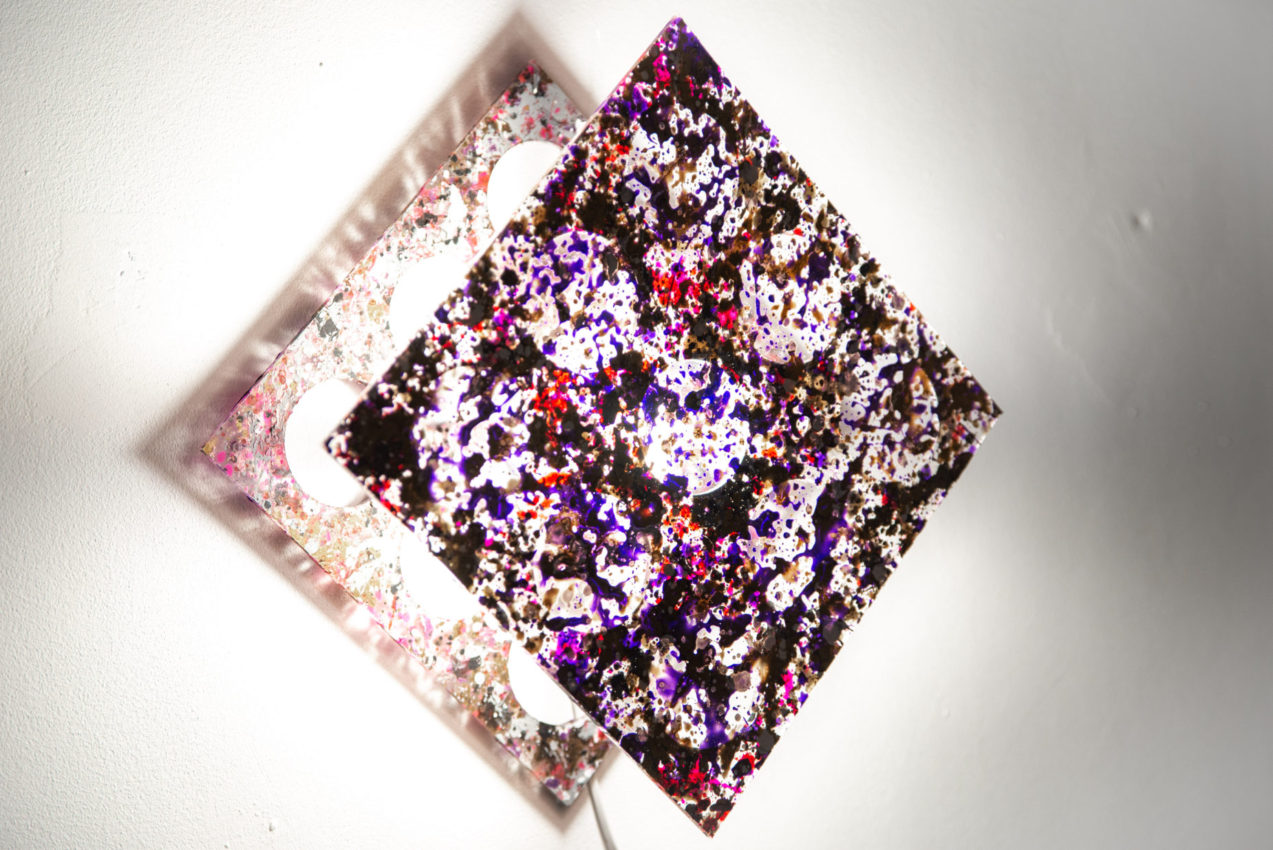
Sometimes, you need difficult moments and painful experiences to learn. After so many years, you already have a lot of wounds all over your body and heart.
It took such a long time to understand what you really want and realize it is something simple and basic. Covering holes in your heart with a bandage, you keep going forward.
Invisible Social Ladder
The Black Lives Matter movement has been a big social movement globally. In this context, Masaaki has created a work that represents his reality of living in Europe as an Asian. The artwork illustrates an invisible hierarchy in European societies in which Asians are marginalized and which is not even well discussed in the global context of the subject of black lives. The main colors of the artwork represent different races and the red stripe is a representation of blood that delivers a message "no matter how different we look, we all have the same color of blood".
Reuse
By employing different discarded materials, this series asks society: “What is value?”
This series converts trash that is economically worthless into artwork. It pushes the boundaries of painting to create a unique visual impression that aims to change the perception of the audience. In society, everything has a price, but it often fluctuates. It does not necessarily reflect society’s needs and demands, nor does it reflect measurable functionality.
Today, even art has become a commodity — an investment in future gains with the expectation of an increase in price. However, nobody can define what art is truly valuable as nobody can define the true value of art.
A Dialogue With Nature
From the COVID-19 pandemic, wildfires in Australia, and Typhoon Haishen to extreme heat in California, flooding in Jakarta, and the earthquake in Alaska, 2020 has been a year filled with natural disasters. We have been forced to re-think our relationship with nature and realize how vulnerable we are when confronted by Mother Nature. Though we have technology that allows us to live in such a comfortable and safe world, these natural disasters have shown us that humans have been overconfident in themselves. It is time for us to change the way we think about nature, from “how to control nature” to “how to live with nature.” For a long time, humans have thought that we are superior to other animals and living beings. Human-developed technology has led us to think that we are in a position to control nature. Just as it is important to listen to others in order to understand them better and develop better relationships, it is necessary to listen to what nature tells us. It is time for us to have a dialogue with nature.
This artwork consists of two colors: red and white, which represent the artist’s origin: Japan. Throughout Japan’s history, the fundamental philosophy of life has always been to “live with nature.” While the Western world’s focus has been on dominating nature, including the domestication of animals and overcoming natural limitations such as gravity, the Japanese approach has been co-living with nature. As it is globally known, Japan has had to deal with many kinds of natural disasters: typhoons, earthquakes, volcanoes, and tsunamis. So, Japan has cultivated a way of thinking about how to co-exist with nature, rather than controlling it. Therefore, the principal colors of the artwork represent the importance of communication with nature, rather than controlling nature. It is important to emphasize that this has nothing to do with nationalism, but is about bringing an Eastern philosophy on nature to the Western world in order to change the way we deal with nature.
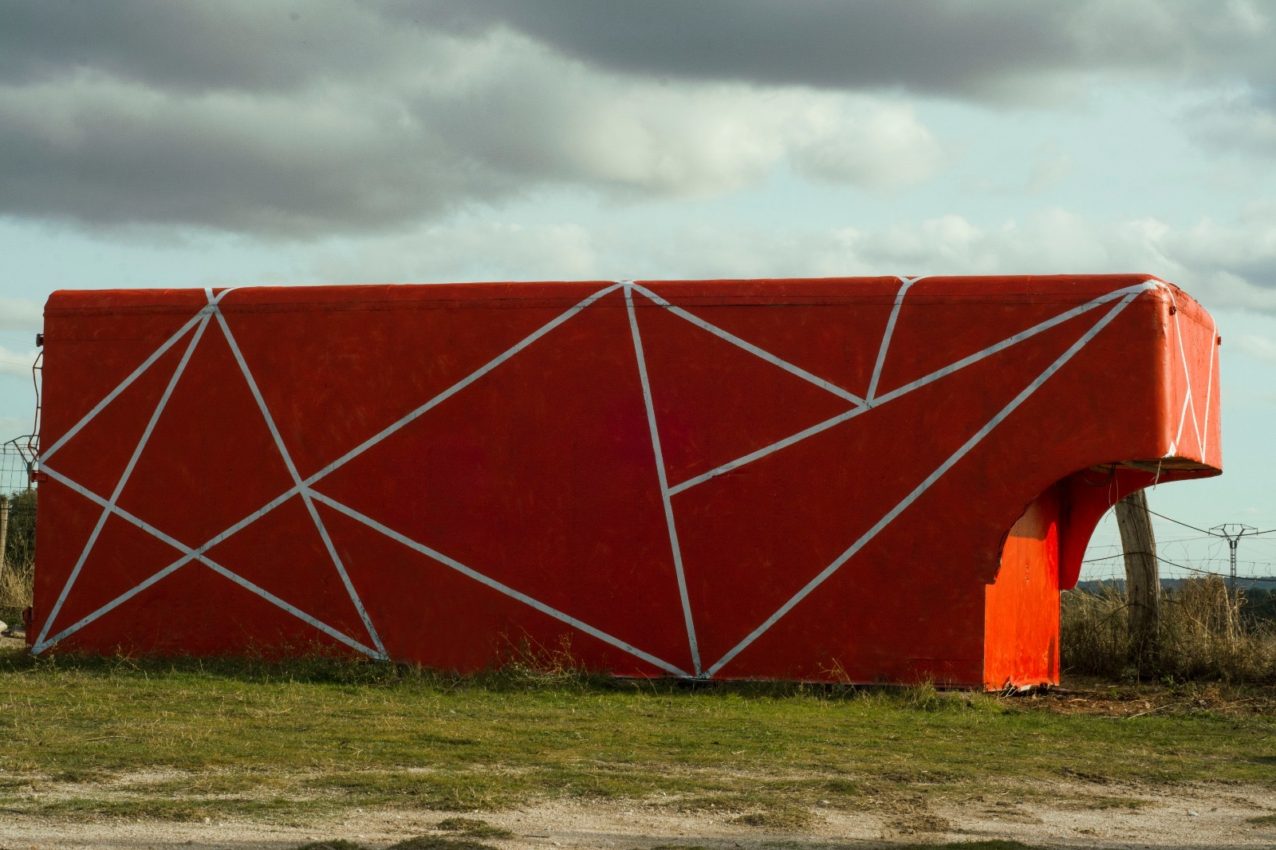
From a contemporary art perspective, the value of this artwork is embedded in the context and environment of its creation. By placing the artwork in the middle of nowhere, far away from a city center, it creates a clear and strong contrast between nature and human development. By using a ready-made object—a container that has enabled humans to accelerate the transportation of goods such as livestock and commercial products—it raises a hairy question: “Is art truly meaningful or merely a manifestation of the human ego?” There is a premise in the art world that art is meaningful and valuable for humanity. However, if we change the perspective from human-centered to nature-centered, it is obvious that humans are just a small part of nature. So, there is a radical and fundamental question of whether human creation is truly meaningful and valuable to nature. For the audience, this artwork is a means to deliver a message to change the way we engage with nature. However, from the perspective of a practicing contemporary artist, this artwork serves to challenge the basic premise and consensus of art itself and generate a disruptive shift in the way we think about ourselves.
Public Artworks
Artwork is made as a catalyst to connect spaces with the universe. It serves as a door to an unknown reality and makes the invisible visible.
This series aims to produce catalysts to connect people beyond borders such as nationality, language, generation, religion, and gender. Its prime purpose is the exploration of ways in which art can contribute to global society and partially solve global issues and problems, rather than focusing on its economic value and role in the marketplace.
This series challenges the idea that artworks are merely tradable merchandise and posits that its pure purpose can be of service to society.
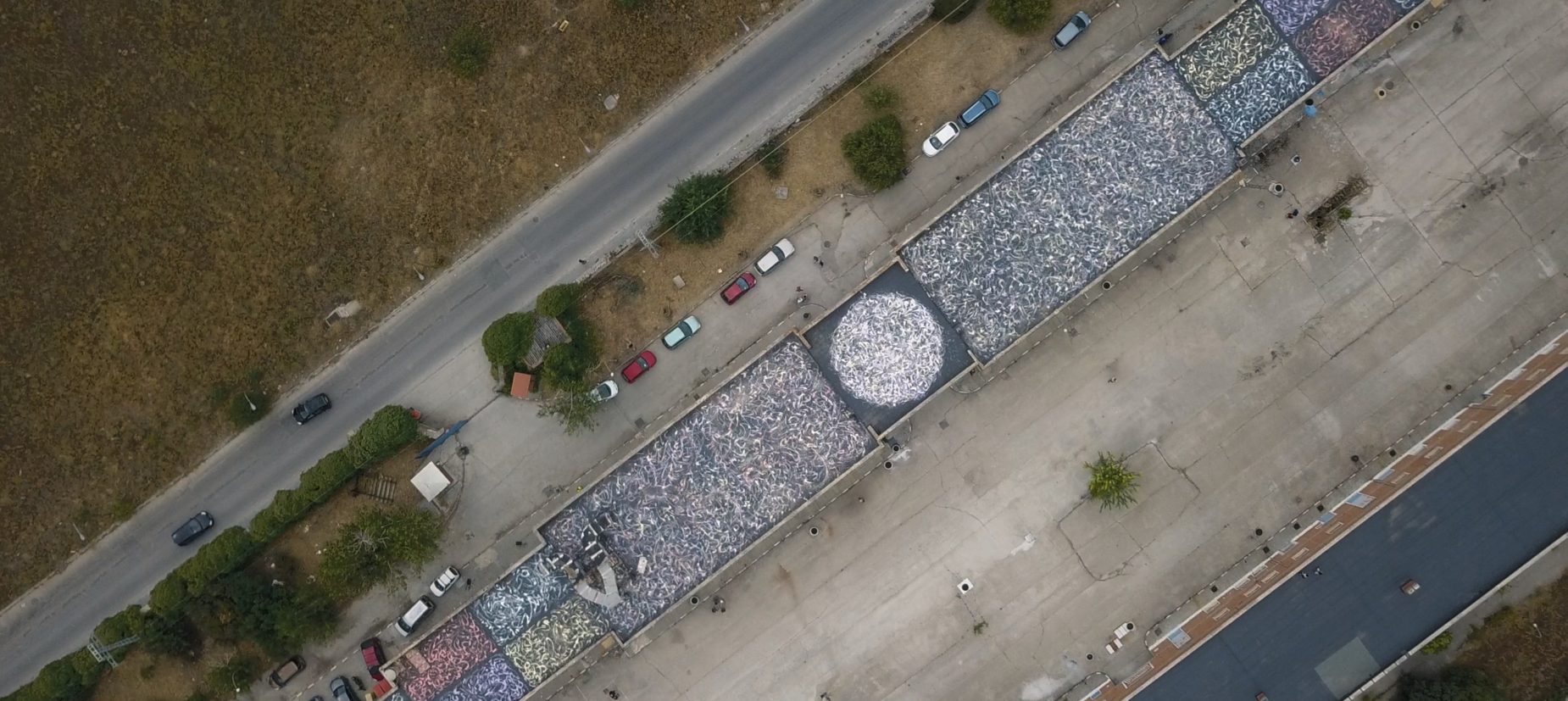
This artwork is the biggest calligraphic artwork in Europe (1926 sq meters) and was created on the rooftop of the Zapadores Museum.
The artwork represents the transition from the chaotic and unorganized world to the organized but united world where people can respect others having different cultures and backgrounds.
The enormous size represents how it is important to open your mind and accept others to connect us beyond borders and realize a truly peaceful world.
Cho Cho~Renaissance /Abstract Flowers
A collaboration with Maria Lafuente, one of the most innovative fashion designers for the Madrid Fashion Week. Referring to abstract expressionism and Japanese calligraphy, this series presents a different dimension of abstract expressionism in the context of globalization of culture. It is a process of disrupting what is established and developing a new structure in chaos. Using a Japanese calligraphy brush allows him to create pieces that cannot be done with fine art brushes to demonstrate new possibilities of abstract expressionism. The work looks like action-painting but you can tell it is very different from Western art in the details and also its use of space inspired by Japanese calligraphy. The work captures the movement of the brush which is controlled and the painting which is more chaotic, like the dynamic movements of nature.
